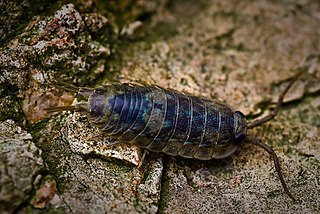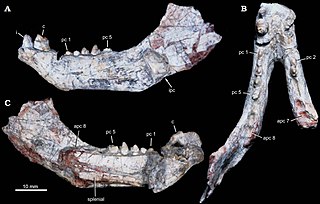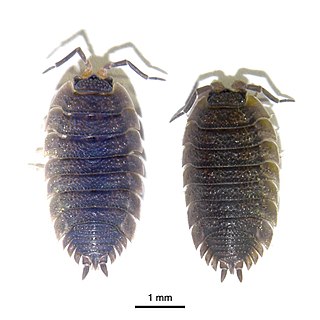
Convolvulaceae, known commonly as the bindweed or morning glory family, is a family of about 60 genera and more than 1,650 species of mostly herbaceous vines, but also trees, shrubs and herbs, and also including the sweet potato and a few other food tubers.

Old Spice is an American brand of male grooming products encompassing aftershaves, deodorants and antiperspirants, shampoos, body washes, and soaps. It is manufactured by Procter & Gamble.

Members of the genus Lophius, also sometimes called monkfish, fishing-frogs, frog-fish, and sea-devils, are various species of lophiid anglerfishes found in the Atlantic and Indian Oceans. Lophius is known as the "monk" or "monkfish" to the North Sea and North Atlantic fishermen, a name which also belongs to Squatina squatina, the angelshark, a type of shark. The North European species is Lophius piscatorius, and the Mediterranean species is Lophius budegassa.

Joseph Charles Schultz Jr. was an American Major League Baseball catcher, coach, and manager. Schultz was the first and only manager for the Seattle Pilots franchise during their lone season before they became the Milwaukee Brewers. Seattle entered the American League as an expansion franchise in 1969, and moved to Wisconsin shortly before the following season.

Barbourofelidae is an extinct family of carnivorans of the suborder Feliformia that lived in North America, Eurasia and Africa during the Miocene epoch and existed for about 7.9 million years.

The Santa Maria Formation is a sedimentary rock formation found in Rio Grande do Sul, Brazil. It has a Carnian age, and is notable for its fossils of cynodonts, "rauisuchian" pseudosuchians, and early dinosaurs and other dinosauromorphs, including the herrerasaurid Staurikosaurus, the basal sauropodomorphs Buriolestes and Saturnalia, and the lagerpetid Ixalerpeton. It received this name because it was discovered first in the city of Santa Maria, on the central region of Rio Grande do Sul state.

Ligidium japonicum is a species of woodlouse found in moist forests in Japan. Individuals may live for up to two years and reach a length of 8 millimetres (0.31 in).

Ligiidae is a family of woodlice, the only family in the infraorder Diplocheta. Its members are common on rocky shores, in similar habitats to those inhabited by species of the bristletail Petrobius and the crab Cyclograpsus. The family contains these genera:

Ligidium hypnorum is a species of woodlouse found across Europe and western Asia. It is a fast-moving, active species whichthat rarely grows longer than 9 mm (0.35 in). It is dark and shiny, and is similar in appearance to the common species Philoscia muscorum, and also the rarer Oritoniscus flavus. In Great Britain, it was first discovered at Copthorne Common, Surrey, in 1873, and most later records are also from South East England. It is considered a good indicator species for ancient woodland.

Ligidium is a genus of woodlice. It contains about 46 species, six of which are probably taxonomic synonyms of Ligidium hypnorum or Ligidium germanicum. Of the remainder, eight species are found in North America, six in Japan, two in Taiwan, four in China, 12 in Turkey, the Caucasus, and Central Asia, and six in Greece.

Bentonyx is an extinct genus of rhynchosaur from the middle Triassic epoch of Devon in England. Its fossil, a well preserved skull, BRSUG 27200, was discovered in Otter Sandstone Formation and was first assigned to Rhynchosaurus spenceri, that is known from 25 specimens. This species was reassigned to its own genus, Fodonyx, that was first described by David W. E. Hone and Michael Benton in 2008. More recently, this skull was reassigned to this genus by Max C. Langer, Felipe C. Montefeltro, David E. Hone, Robin Whatley and Cesar L. Schultz in 2010 and the type species is Bentonyx sidensis.

Candelariodon is an extinct genus of carnivorous probainognathian cynodonts from the Middle to Late Triassic Santa Maria Formation of the Paraná Basin in Rio Grande do Sul state, Brazil. Candelariodon is known from a partial mandible having some complete teeth. It was first named by Téo Veiga de Oliveira, Cesar Leandro Schultz, Marina Bento Soares and Carlos Nunes Rodrigues in 2011 and the type species is Candelariodon barberenai.

Armadilloniscus is a genus of woodlice in the family Detonidae. There are more than 30 described species in Armadilloniscus.
Brackenridgia is a genus of woodlice in the family Trichoniscidae. There are about nine described species in Brackenridgia.
Selenothrips is a genus of thrips in the family Thripidae. There are at least two described species in Selenothrips.
Ligidium gracile is a species of rock slater in the family Ligiidae. It is found in North America.
Pterotaea cariosa is a species of geometrid moth in the family Geometridae. It is found in North America.

Harmostes reflexulus is a species of scentless plant bug in the family Rhopalidae. It is found in the Caribbean Sea, Central America, North America, and South America.

Invertebrate iridescent virus 31 (IIV-31), also known informally as isopod iridovirus, is a species of invertebrate iridescent virus in the genus Iridovirus. Oniscidea serve as hosts. Infection is associated with decreased responsiveness in the host, increased mortality, and most strikingly, the emergence of an iridescent blue or bluish-purple colour due to the reflection of light off a paracrystalline arrangement of virions within the tissues.
Loren Paul Woods was an American ichthyologist and museum curator at the Field Museum of Natural History In Chicago. He joined the museum's education department as a guide lecturer in 1938. In 1941, he was transferred to the Division of Fishes, from where he retired in 1978. His career was interrupted by a four-year period of duty with the United States Navy during World War II. While he was in the navy, Marion Griswold Grey served as the unpaid curator, becoming an associate at the museum when Woods resumed his post. During his time at the Field Museum, he assembled specimen collections of North American freshwater fish and Atlantic, Indian, and Pacific Ocean marine fish. This material resulted in a major expansion of the museum's fishes holdings, which had previously been a mostly freshwater collection. Woods is best remembered for his publications on damselfish, squirrelfish, and Berycidae.














